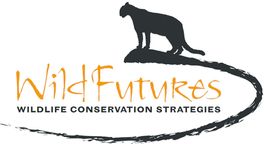WildFutures' Wildlife Webinar Series Archive
The Secret Life of Mountain Lions
Dr. Mark Elbroch, from Panther’a Puma Project, shares discoveries from his years of research in the Wind River Range of Wyoming, which is the basis of the video, The Secret Life Of Mountain Lions. In this 45-minute webinar, Dr. Elbroch discusses how the use of cutting-edge GPS collars and high-tech remote cameras are helping Panthera record rare and undocumented mountain lion behaviors, extended family lineages, and gather data revealing the hidden life of the ‘America’s lion.’
About the Presenter- Dr. Mark Elbroch serves as the Lead Scientist for Panthera's Puma Program, based in Kelly, Wyoming. Dr. Elbroch designs current puma research, manages and leads project operations, and directs the analysis of project data gathered in the field. He has contributed to puma research and conservation in Idaho, Wyoming, Colorado, California, Mexico and Chile, as well as worked as a wildlife consultant across North America, specializing in field inventories, the identification of wildlife corridors, and in supporting capture efforts of diverse species. In 2005, Dr. Elbroch was awarded a Senior Tracker Certificate in Kruger National Park, South Africa by CyberTracker Conservation, after successfully following lions across varied terrain. He is the Initial Evaluator for Cyber Tracker Evaluations in North America, where they have been used to test observer reliability in wildlife research and as an educational tool by nonprofit organizations. In 2015, he was awarded an honorary Master Tracker Certificate for contributions to the field.
Dr. Elbroch is a regular contributor to National Geographic’s CatWatch Blog and has authored and coauthored 10 books on natural history, including two award-winning books on wildlife tracking. Dr. Elbroch is also a 2011 Switzer Fellow. Find out more from the Teton Cougar Project Facebook page and Cougar Channel Kitten Research.
Dr. Elbroch is a regular contributor to National Geographic’s CatWatch Blog and has authored and coauthored 10 books on natural history, including two award-winning books on wildlife tracking. Dr. Elbroch is also a 2011 Switzer Fellow. Find out more from the Teton Cougar Project Facebook page and Cougar Channel Kitten Research.



